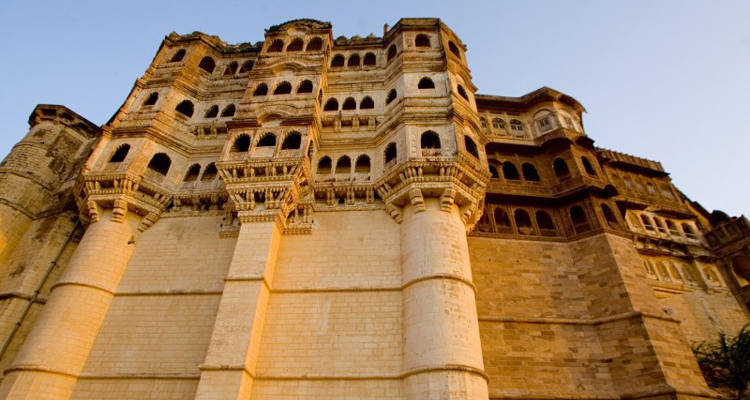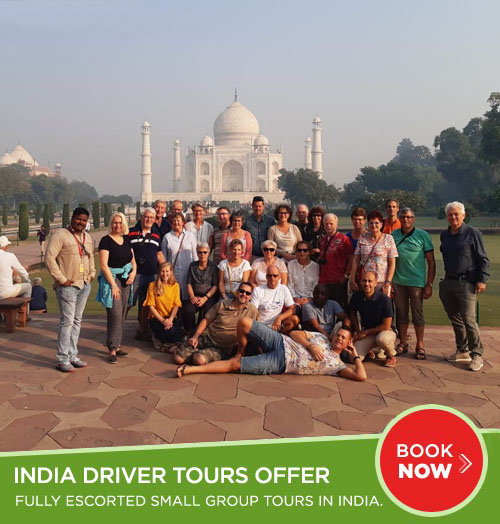Jodhpur
Jodhpur is the second largest city in the state of Rajasthan, India. It is called the Gateway to Thar, as it is literally on the edge of the Thar desert. It is also called the Sun City as the sun shines (very bright and hot!) almost every day of the year.

Jodhpur, the second largest city in Rajasthan is popularly known as the Blue City. The name is clearly befitting as most of the architecture – forts, palaces, temples, havelis and even houses are built in vivid shades of blue. The strapping forts that tower this magnificent city sum up to a spectacle you would not want to miss. The mammoth, imposing fortress of Mehrangarh has a landscape dominating a rocky ridge with the eight gates leading out of the fortress. The new city is located outside the structure. Jodhpur is also known for the rare breed of horses known as Marwari or Malani, which are only found here.
Jodhpur marks its origin back to the year of 1459 AD. The history of this prosperous city revolves around the Rathore clan. Rao Jodha, the chief of Rathore Clan is credited with the origin of Jodhpur in India. The city is known to be built in place of the ancient capital, Mandore of the state of Manwar. Hence, the people of Jodhpur and surrounding areas are commonly known as Marwaris. Also, it is believed that the relics of Mandore can still be witnessed in the Mandore Gardens.
Places to visit in Jodhpur
Umaid Bhawan Palace: Umaid Bhawan Palace was built by Maharaja Umaid Singh in 1929 to counter a famine which had hit the state at the time. It was also known as the Chittar Palace while being constructed thanks to the use of stones drawn from the Chittar hill. The palace was designed by HV Lanchester, a renowned British architect, and was completed in 16 years. Built with sandstone and marble, the architecture of the palace is described as a blend of lndo-Saracenic, Classical Revival and Western Art Deco styles. It is recognised as one of the largest private homes in the world and also one of the more spectacular buildings. It is the only palace built in the 20th century.
Mehrangarh Fort: Rising perpendicular and impregnable from a hill which is 125 metres above Jodhpur’s skyline is the Mehrangarh Fort. This historic fort is one of the most famous in India and is packed with history and legends. Mehrangarh Fort still bears the imprints of cannonball attacks courtesy the armies of Jaipur on its second gate. Chiselled and sturdy, the fort is known for its exquisite latticed windows, carved panels, intricately decorated windows and walls of Moti Mahal, Phool Mahal and Sheesh Mahal.
Jaswant Thada: This milky white memorial built towards the end of the 19th century as a tribute to the leader Jaswant Singh is a huge tourist attraction. Jaswant Singh, who ruled Jodhpur, invested well in his state. He made attempts to bring down the level of crime, subdue dacoits, built railways and broadly worked on raising the economy of Marwar. Jaswant Thada is managed and looked after by the Mehrangarh Museum Trust (MMT) and is open to public. The Trust is operating a Museum in Jaswant Thada displaying portraits of Marwar rulers along with informative didactics – the information serves as orientation space to understand the history of Marwar through the Portraits. Its grounds serve as a serene venue for morning concerts during music festivals such as the Rajasthan International Folk Festival and the World Sacred Spirit Festival.
Maha Mandir: Mahamandir, meaning great temple, is a sanctified spot where tranquillity reigns supreme. Situated on Mandore road, the temple is an architectural wonder. It is supported by 84 pillars and ornamented with detailed designs and figures depicting various postures of Yoga.
Mandore : Towards the north of Jodhpur is the ancient capital of Marwar, Mandore. This area is of major historical importance and you will find the dewals or cenotaphs of Jodhpur’s former rulers. Unlike the original chhatri-shaped cenotaphs that are typical patterns of Rajasthan architecture, these are built along the lines of Hindu temples.
Balsamand Lake and Palace: Balsamand Lake is about 5 kilometres from Jodhpur on the Jodhpur-Mandore Road. Built in 1159 AD, it was planned as a water reservoir to cater to Mandore. The Balsamand Lake Palace was built on its shore later as a summer palace. It is surrounded by lush green gardens that house groves of trees such as mango, papaya, pomegranate, guava and plum. Animals and birds like the jackal and peacock also call this place home. This lake is now a popular picnic spot with tourists and locals.
Clock Tower and Sardar Market: Ghanta Ghar, also known as the clock tower of Rajasthan, is situated in one of the busiest areas of Jodhpur, the Sadar Bazaar. It was constructed by Shri Sardar Singh Ji of Jodhpur. The Sadar Market is quite popular among tourists, who throng the streets to purchase Rajasthani textiles, clay figurines, miniature camels and elephants, marble inlay work and classic silver jewellery.
Jodhpur Government Museum: The government museum, located in Umaid Garden, houses a rich collection of relics including armoury, textiles, local art and crafts, miniature paintings, portraits of rulers, manuscripts and images of the Jain Tirthankaras. Wildlife lovers can also visit the zoo, which is located close by.
How to Reach Jodhpur
By Air: Jodhpur airport is located in the cantonment area at a short distance of 5 km from the city center. The city is well connected with major metropolitan cities in India – Mumbai, Delhi etc through direct flights.
By Train: Jodhpur railway station is located at station road. The city is directly connected with the major cities like Delhi, Mumbai, and Chennai through trains. Trains are easily available throughout the year.
By Road: Another convenient mode of transportation to Jodhpur is by road. The Jodhpur highway is well connected with cities like Agra, Ahmadabad, Ajmer, Delhi, Jaipur, Jaisalmer and Udaipur by bus. You can also hire a taxi to reach Jodhpur.
Local Transport: Mode of transport within Jodhpur includes Taxis, Auto-rickshaws and Tongas. Taxi stand is near to the main railway station. You can also hire an auto rickshaw or explore Jodhpur on a bicycle.


